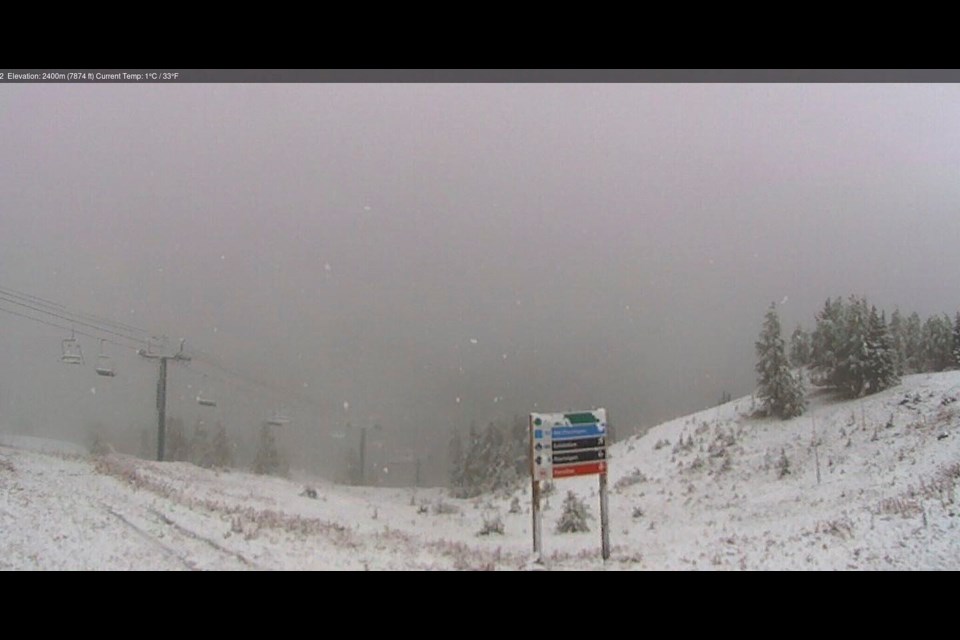BOW VALLEY – All signs are pointing toward an El Niño weather pattern for Banff National Park, Kananaskis Country and across Western Canada in 2023-24.
For powder junkies, who surely saw Lake Louise Ski Resort’s snowy mountain photos last week, an El Niño cycle in the Bow Valley generally means milder conditions, but the type of snowfall varies from region-to-region.
Experts say it’s still early to have a lot of confidence about what’s in store for the upcoming winter ski season, but it's generally accepted that a transition period is happening for an El Niño.
“What that generally means for Western Canada for the winter months is a warmer than normal pattern as well as slightly drier than normal conditions as well,” said Justin Shelley, weather preparedness meteorologist with Environment and Climate Change Canada.
“But it doesn't necessarily mean that all of these impacts are going to happen the same way every year, every year is sort of different … it’s more of a probability rather than a certainty in terms of a climate outlook.”
With weaker winds at the equator and different temperature anomalies, an El Niño is a natural climate pattern associated with warming of the ocean surface temperatures in the central and eastern tropical Pacific Ocean, according to the World Meteorological Organization.
Warmer waters are pushed toward Western Canada, resulting in milder than normal winters and springs as a result.
El Niño occurs every two to seven years and can last up to 18 months.
For the past few years, the weather cycle Western Canada has been in a La Niña, which has the opposite effects of the El Niño. Typically, a La Niña cycle is better for snowfall in the Bow Valley.
Unfortunately for ski lovers, experts are forecasting that the La Niña is gone and the El Niño is coming to Western Canada.
Shelley said the last time the Bow Valley was hit by an El Niño was in winter 2015-16, which was “moderate” and “contradictory to general patterns.”
“Yeah, 2016 was a weird year, actually, because Banff itself, the townsite, saw quite a bit below normal precipitation through the months of January, February and March,” said Shelley.
“However … [in Lake Louise] it was actually above average here for the Lake Louise snowfall during that 2015-2016 ski season. But overall in all of Western Canada, and that winter season, there were warmer than normal temperature conditions as well and it looks like the precipitation varied a bit from region-to-region.”
Looking just around the corner at the rest of September and into October, Shelley said weather patterns are shaping up to be five to 10 degrees warmer than normal for daytime highs.
He said it will be interesting to see how the fall pattern progresses and what that means for winter.
“That could have impacts on sort of the expected snowfall and through the mountain parks this ski season,” Shelley said.
According to The Old Farmer’s 2023 Almanac, its weather forecast for fall in Alberta will be above average warmth. In British Columbia, it predicts it will be warmer and wetter than normal.
While at OpenSnow, an online source dedicated to weather updates and snow reports, experts are fully forecasting an El Niño has begun. However, experts are adamant there is still a level of uncertainty when forecasting and the type of snowfall for the upcoming season will vary from region-to-region.




